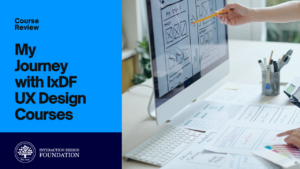UX design for mobile app development
In today’s fast-paced digital landscape, startups face fierce competition when it comes to app development. To succeed in this competitive environment, startups must prioritize user experience (UX) design from the very beginning. A well-crafted UX can be a game-changer, attracting and retaining users, and ultimately driving the success and growth of a startup. In this article, we will explore the importance of Minimum Viable Product (MVP) and testing in UX design for startup companies.
The Significance of MVP:
When it comes to developing an app, startups often have limited resources and tight budgets. This is where the concept of the Minimum Viable Product (MVP) comes into play. An MVP is a stripped-down version of the final product that includes only its core features. By releasing an MVP, startups can quickly gather user feedback and validate their assumptions while conserving resources.
User-Centric Approach:
By focusing on the core functionalities that deliver value to users, an MVP allows startups to prioritize user-centric design. By understanding the needs, pain points, and behaviors of target users, startups can create a seamless and intuitive user experience from the ground up.
Rapid Iteration:
MVP empowers startups to iterate and improve their product based on real user feedback. This iterative approach enables the team to address usability issues, refine features, and make informed decisions about the app’s future direction. Regular iterations based on user feedback ensure that the final product aligns with user expectations and increases the chances of success.
The Role of Testing in UX Design:
Testing is an integral part of the UX design process. It enables startups to identify flaws, make data-driven decisions, and optimize the user experience. Here’s why testing is crucial for startup app development:
Usability Testing:
Usability testing allows startups to observe how real users interact with their app. By watching users navigate through the app, encounter challenges, and provide feedback, startups can identify pain points, areas of confusion, and opportunities for improvement. Incorporating usability testing early and often helps avoid costly design mistakes down the road.
A/B Testing:
A/B testing involves comparing two or more versions of an app’s interface or functionality to determine which one performs better. By testing different design elements, layouts, or even copywriting, startups can optimize conversion rates, engagement, and user satisfaction. A/B testing provides valuable insights into user preferences and helps refine the UX design to maximize its impact.
Continuous Feedback:
Testing is not a one-time event but an ongoing process. Startups should establish channels for collecting feedback from users, whether through in-app surveys, user interviews, or feedback forms. This continuous feedback loop ensures that startups stay connected with their users, gather insights, and make informed UX design decisions throughout the product’s lifecycle.
Conclusion:
For startup companies embarking on app development, prioritizing UX design is critical for long-term success. By embracing the MVP approach, startups can launch their app faster while gathering valuable user feedback. This feedback fuels iterative improvements, resulting in a user-centric product that resonates with the target audience.
Moreover, thorough testing throughout the UX design process is vital. Usability testing, A/B testing, and continuous feedback enable startups to uncover insights, optimize the user experience, and make data-driven decisions.
In the competitive landscape of app development, startups that value UX design, leverage MVP, and embrace testing as a core component of their development process will have a distinct advantage. By prioritizing user needs and delivering exceptional experiences, startups can foster user loyalty, attract investors, and pave the way for sustainable growth in the dynamic world of technology startups. Read More on DesignRush




